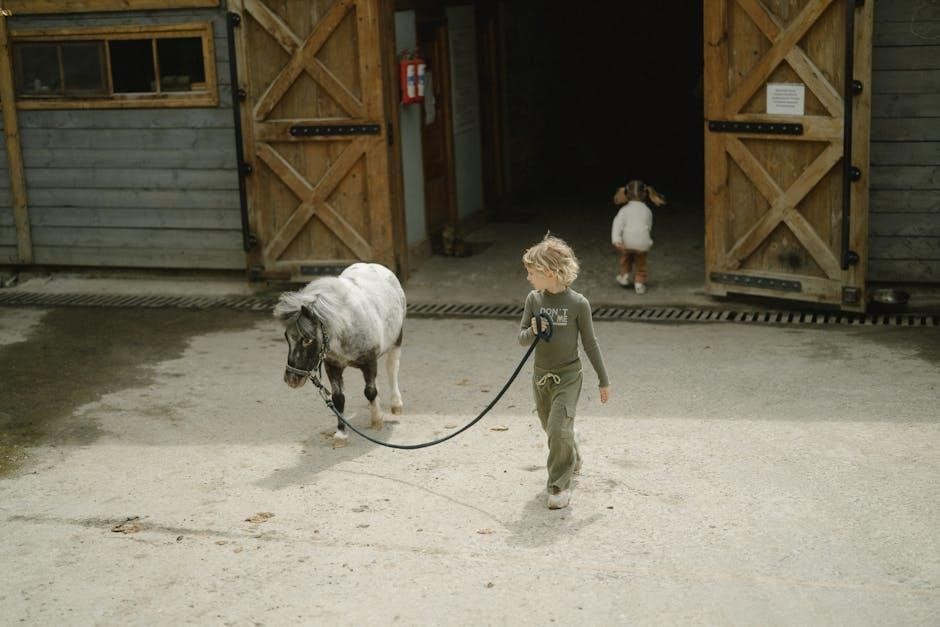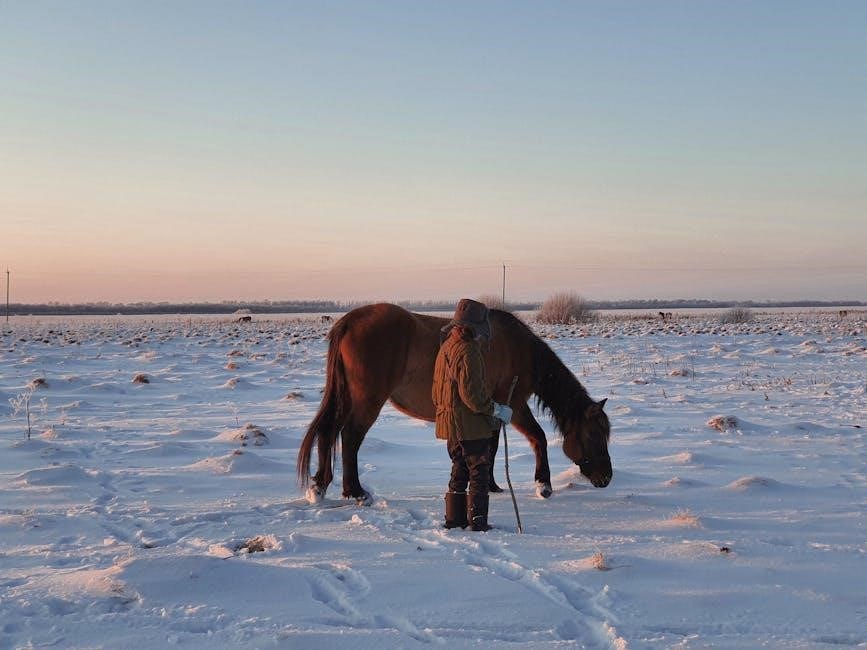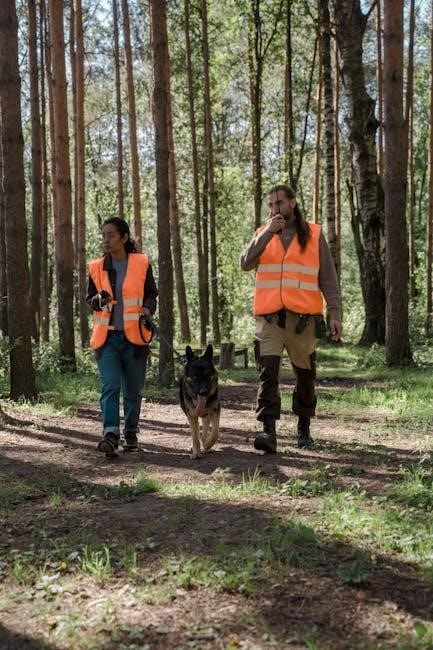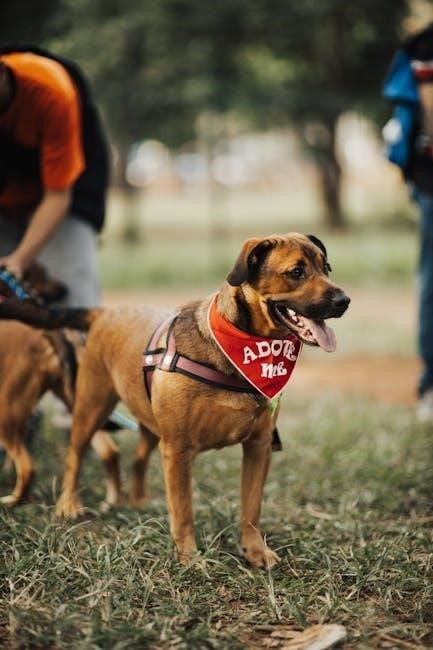The Lethality Assessment Program (LAP) is a structured approach to identify domestic violence victims at risk of severe harm or homicide. It involves an 11-item screening tool to assess danger levels. The LAP connects victims with immediate support services.
1.1 Definition and Purpose
The Lethality Assessment Program (LAP) is a collaborative strategy between law enforcement and domestic violence advocates. It uses an 11-item risk assessment to identify victims at high risk of homicide or severe injury. The purpose is to provide immediate interventions, such as referrals to shelters and services, to prevent domestic violence-related deaths and ensure victim safety.
1.2 Importance in Domestic Violence Cases
The Lethality Assessment Program (LAP) plays a critical role in domestic violence cases by identifying high-risk victims. Early detection through the 11-item assessment enables timely interventions, reducing the likelihood of homicide or severe harm. LAP fosters collaboration between law enforcement and advocates, ensuring victims receive crucial support services. This approach has proven effective in saving lives and preventing further violence.

Structure of the Lethality Assessment Program (LAP)
The LAP structure involves a two-step process: an 11-item risk assessment and immediate connection to support services. It ensures collaboration between law enforcement and advocates.
2.1 Overview of the LAP Model
The LAP Model is a collaborative system between law enforcement and domestic violence advocates. It uses an 11-item risk assessment to identify high-risk victims. Officers are trained to administer the assessment at domestic violence scenes. A “Yes” to any of the first three questions triggers an immediate referral to services. This ensures timely intervention.
2.2 The 11-Item Risk Assessment
The 11-item risk assessment is a core component of the LAP Model, designed to evaluate a victim’s potential danger. Questions focus on threats, weapon use, and past violence. A “Yes” to any of the first three questions automatically triggers a referral. This structured tool ensures consistency and accuracy in identifying high-risk situations; It aids in connecting victims with critical services promptly.
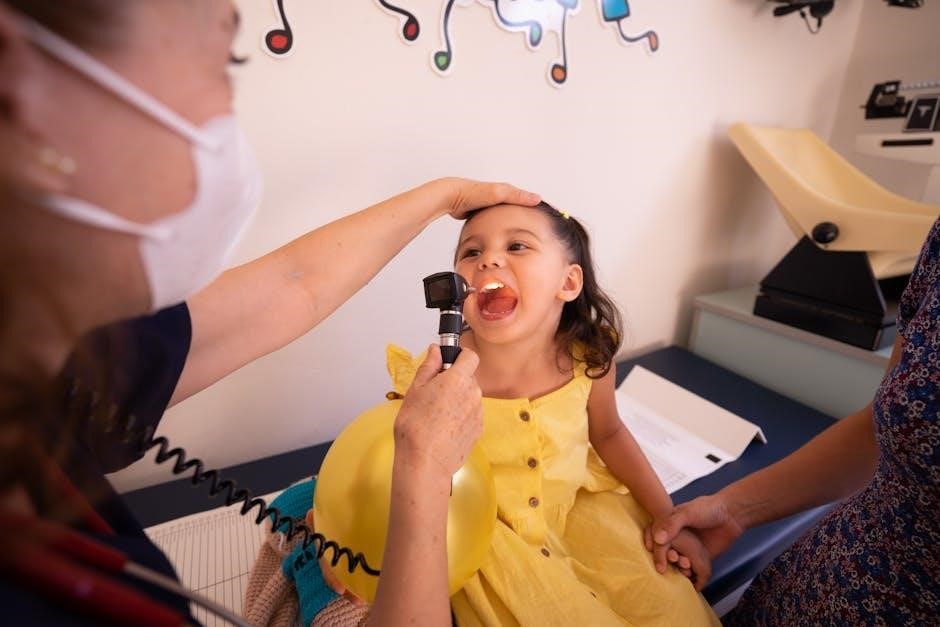
History and Development of LAP
The Lethality Assessment Program was developed in Maryland, pioneering a research-based approach to identify high-risk domestic violence cases, created by the Maryland Network Against Domestic Violence and Dr. Jacquelyn Campbell.
3.1 Origins and Creation
The Lethality Assessment Program (LAP) originated in Maryland, developed by the Maryland Network Against Domestic Violence (MNADV) in collaboration with Dr. Jacquelyn Campbell. The program emerged from research on intimate partner violence and homicide, aiming to create a tool that could predict and prevent lethal outcomes. Its creation marked a significant shift in domestic violence intervention strategies.
3.2 Key Developers and Contributors
The Maryland Network Against Domestic Violence (MNADV) and Dr. Jacquelyn Campbell were pivotal in developing the LAP. Dr. Campbell’s research on intimate partner homicide informed the tool’s creation. Law enforcement agencies and domestic violence advocates also contributed, ensuring the program’s practical application. Their collaboration enhanced LAP’s effectiveness in identifying high-risk victims and connecting them with critical resources.
Purpose and Goals of LAP
The LAP aims to prevent domestic violence homicides and serious injuries by identifying high-risk victims. It connects them with immediate support services and shelters.
4.1 Prevention of Domestic Violence Homicides
The LAP’s primary goal is to prevent domestic violence homicides by identifying high-risk victims early. Officers use an 11-item assessment to determine if victims face increased homicide risk, such as threats with weapons or escalating violence. A “Yes” to any high-risk question triggers immediate referrals to support services, reducing lethal outcomes and ensuring safety through proactive intervention.
4.2 Connecting Victims to Support Services
The LAP bridges the gap between victims and support services by immediately connecting them with domestic violence advocates. After a positive assessment, victims are referred to shelters, counseling, and legal aid. This collaboration ensures timely intervention, reducing risks and empowering victims to escape dangerous situations through access to essential resources and guidance.

Protocols and Procedures
The LAP includes automatic referral triggers and a structured 11-item assessment. Officers use these tools to identify high-risk victims and connect them with advocates immediately.
5.1 Automatic Referral Triggers
A “Yes” to any of the first three questions triggers an immediate referral to support services. These questions focus on weapon use, threats, and fear of death. This ensures high-risk victims receive prompt assistance, enhancing their safety and connecting them with essential resources and advocates.
5.2 Questionnaire and Assessment Process
The LAP uses an 11-item questionnaire to evaluate a victim’s risk level. Officers ask about weapon use, threats, and fear of death. A “Yes” to any high-risk question triggers immediate referrals. The assessment is conducted during domestic violence calls, ensuring victims receive timely support and resources to enhance their safety and well-being.
Implementation and Training
LAP implementation involves police training on domestic violence sensitivity and PTSD education. Officers learn to use the lethality assessment tool effectively, ensuring victims receive timely support and resources.
6.1 Role of Law Enforcement
Law enforcement plays a crucial role in LAP by conducting risk assessments at domestic violence scenes. Officers use an 11-item screening tool to identify high-risk victims. They initiate immediate referrals to support services, ensuring safety and connecting victims with resources. This proactive approach helps prevent homicides and reduces future violence through early intervention and collaboration with advocates.
6;2 Training for Police Officers
Training for police officers is essential for effective LAP implementation. Officers learn to recognize risk factors, conduct lethality assessments, and communicate sensitively with victims. PTSD education and cultural sensitivity are key components. This training ensures officers can identify high-risk situations and connect victims with critical resources, enhancing safety and support. It also fosters collaboration between law enforcement and domestic violence advocates.
Benefits of LAP
The Lethality Assessment Program reduces domestic violence homicide rates and increases victim engagement with support services, ensuring safer outcomes for those at highest risk.
7.1 Reduction in Homicide Rates
The Lethality Assessment Program has been instrumental in reducing domestic violence-related homicides. By identifying high-risk victims through an 11-item questionnaire, LAP ensures timely interventions. According to studies, jurisdictions implementing LAP have seen a significant decrease in intimate partner homicides. This approach not only saves lives but also enhances the overall safety of vulnerable populations.
7.2 Increased Victim Engagement
The Lethality Assessment Program significantly enhances victim engagement by providing immediate connections to support services. Victims are more likely to participate in safety planning when they receive timely resources. LAP’s structured approach ensures that high-risk individuals are actively engaged, fostering trust and collaboration between victims and service providers. This engagement is critical for long-term safety and empowerment.

Challenges and Limitations
Challenges include limited officer training, varying resource availability, and victim reluctance to engage. These factors can hinder effective implementation and victim support.
8.1 Officer Training and Sensitivity
Effective implementation of LAP requires specialized training for officers to recognize high-risk situations and respond sensitively. PTSD education and understanding subtle cues are critical. Inadequate training can lead to missed referrals or victim distrust, undermining the program’s effectiveness. Ongoing training ensures officers can connect victims with vital resources while maintaining confidentiality and sensitivity.
8.2 Resource Availability
Resource availability is crucial for LAP’s success. Limited access to shelters, counseling, and legal aid can hinder efforts to protect high-risk victims. Adequate funding and collaboration between agencies ensure that victims receive the necessary support. Without sufficient resources, even accurate assessments may fail to prevent harm, highlighting the need for robust service networks.

Future of Lethality Assessment
The LAP’s future involves expansion and tech integration. The PDF document enhances data collection, enabling better tracking and support for high-risk victims. Modernizing assessment processes is key.
9.1 Expansion and Adaptation
The LAP is expanding to reach diverse populations and jurisdictions. Adaptations include cultural sensitivity adjustments and integration with emerging technologies. PDF tools now facilitate data entry and reporting, aiding in program replication. This ensures the LAP remains effective in varying contexts, enhancing victim support and risk assessment accuracy across different communities.
9.2 Integration with Technology
Technology enhances LAP’s efficiency through digital tools like PDF reports and real-time data collection. Secure platforms enable law enforcement and advocates to share information seamlessly. Mobile apps allow officers to conduct assessments on-site, improving response times. Digital training modules ensure officers are proficient with these tools, fostering better coordination and more accurate victim support connections.

Case Studies and Success Stories
Case studies highlight LAP’s effectiveness in reducing domestic violence homicides. Real-life examples demonstrate how victims received timely interventions, escaping dangerous situations and rebuilding their lives safely.
10.1 Real-World Applications
The LAP has been successfully implemented in various jurisdictions, with police officers using the 11-item assessment to identify high-risk victims. Real-world applications include immediate referrals to shelters and support services, reducing homicide rates. The program’s effectiveness is evident in case studies where timely interventions saved lives and connected victims with crucial resources, demonstrating its practical impact in combating domestic violence.
10.2 Impact on Victim Outcomes
The LAP has significantly improved victim outcomes by connecting high-risk individuals with critical services. Victims engaged through the program often experience reduced injuries, safer living conditions, and empowerment. The collaboration between law enforcement and domestic violence programs ensures timely interventions, leading to measurable reductions in homicide rates and long-term safety for survivors of domestic violence.

Lethality Assessment in PDF Format
The LAP is documented in a PDF format, enabling easy data entry and report generation. This tool streamlines assessment processes and ensures accurate tracking of victim cases.
11.1 Purpose of the PDF Document
The PDF document serves as a standardized tool for recording lethality assessments, ensuring consistency in data collection and reporting. It facilitates the systematic evaluation of domestic violence cases, enabling law enforcement and advocates to track high-risk victims effectively and provide timely interventions. This structured format aids in maintaining accurate records and generating actionable insights.
11.2 Data Entry and Reporting Features
The PDF document includes structured data entry fields for each lethality assessment question, enabling systematic recording of victim responses. It also provides reporting features to generate summaries of assessment results, track high-risk cases, and monitor follow-up actions. These features facilitate data analysis, ensuring consistent documentation and improving the effectiveness of interventions for domestic violence victims.
Ethical Considerations
Ethical use of lethality assessment ensures victim confidentiality and autonomy. It prioritizes safety, avoiding actions that might escalate danger or compromise trust in the process.
12.1 Confidentiality and Privacy
Maintaining confidentiality is crucial in lethality assessments to protect victims’ identities and personal information. Strict protocols ensure data security, limiting access to authorized personnel only. Privacy is safeguarded throughout the assessment process to prevent unintended consequences and build trust between victims and service providers. Compliance with legal standards further reinforces these protections, ensuring ethical practices are upheld.
12.2 Victim Safety and Autonomy
Victim safety and autonomy are central to lethality assessment protocols. Assessments prioritize empowering victims to make informed decisions about their well-being. Tools like the LAP ensure victims’ voices are heard, respecting their autonomy while providing tailored support. Safety planning is individualized to address specific risks, fostering a collaborative approach between victims and service providers to enhance protection and self-determination.

Policy Implications
The Lethality Assessment Program influences domestic violence laws by promoting evidence-based policies and fostering inter-agency collaboration to enhance victim protection and safety through coordinated legal and support systems.
13.1 Influence on Domestic Violence Laws
The Lethality Assessment Program has shaped domestic violence laws by integrating evidence-based risk assessments into legal frameworks. This approach ensures that high-risk cases receive prioritized attention, leading to stronger protective measures and accountability for offenders. By informing policy with data, LAP contributes to more effective legal responses to domestic violence incidents.
13.2 Inter-Agency Collaboration
The Lethality Assessment Program fosters inter-agency collaboration by connecting law enforcement with domestic violence programs and social services. This partnership ensures a coordinated response to high-risk cases, improving victim safety and access to resources. Routine communication between agencies enhances the effectiveness of interventions, ultimately reducing risks and providing immediate support to those in danger.

Research and Evaluation
Research evaluates the LAP’s effectiveness in reducing domestic violence homicides through quasi-experimental studies and data analysis, ensuring evidence-based improvements to the program.
14.1 Effectiveness Studies
Effectiveness studies on the Lethality Assessment Program (LAP) demonstrate its success in reducing domestic violence homicides. Research highlights how the 11-item risk assessment identifies high-risk victims. By connecting them to support services, LAP significantly lowers homicide rates and improves victim outcomes. These studies underscore LAP’s role in preventing severe violence and saving lives through early intervention and resource connection.
14.2 Quasi-Experimental Evaluations
Quasi-experimental evaluations of LAP reveal its impact on reducing domestic violence incidents. By comparing areas with and without LAP, studies show a notable decrease in intimate partner homicides. These evaluations highlight LAP’s effectiveness in identifying high-risk cases and connecting victims to critical services, thus preventing potential tragedies and enhancing community safety through proactive measures.
The Lethality Assessment Program (LAP) has proven to be a critical tool in preventing domestic violence homicides by identifying high-risk victims and connecting them to support. Its structured approach ensures timely interventions, saving lives.
For more details, refer to the Maryland Network Against Domestic Violence publications.
15.1 Summary of Key Points
The Lethality Assessment Program (LAP) is a vital tool for identifying domestic violence victims at high risk of homicide. It uses an 11-item screening process to assess danger and connects victims with immediate support services. By fostering collaboration between law enforcement and advocates, LAP has proven effective in reducing domestic violence homicides and promoting victim safety.
15.2 Further Reading and Resources
For deeper understanding, explore the official Lethality Assessment Program (LAP) website and resources from the Maryland Network Against Domestic Violence. Review publications like Virginia’s LAP Evaluation and Understanding Intimate Partner Homicide Prevention. The LAP PDF guide provides detailed insights into data collection and reporting, enhancing awareness of domestic violence risk assessment and intervention strategies.


